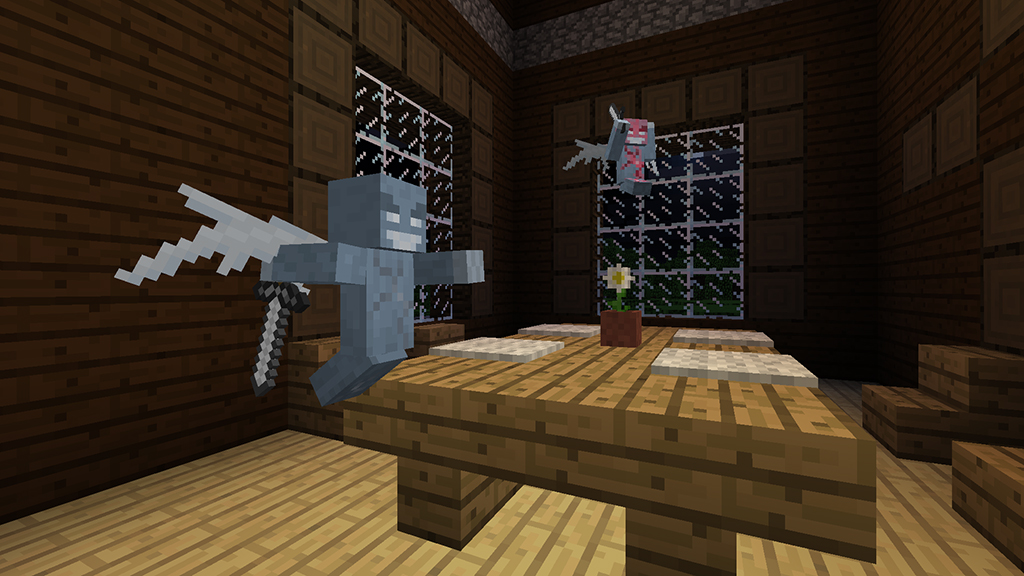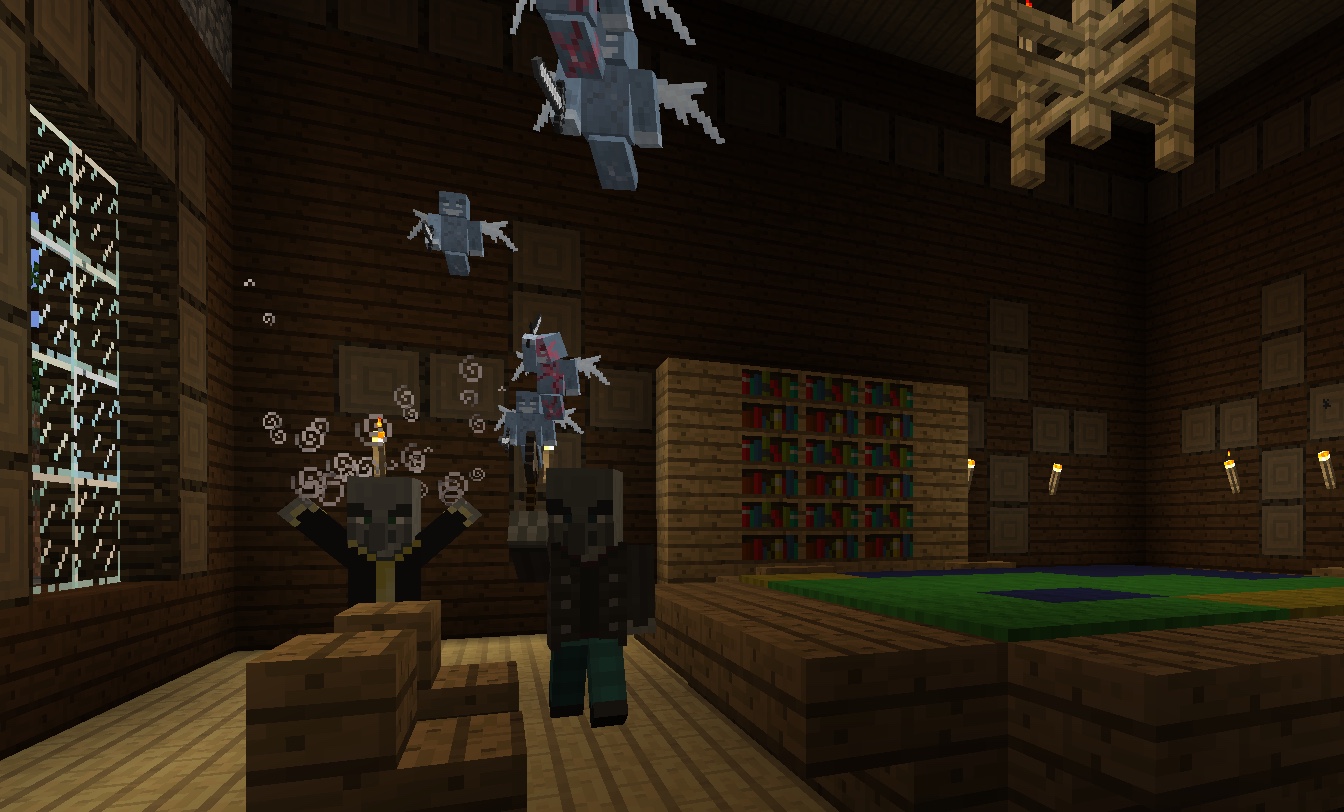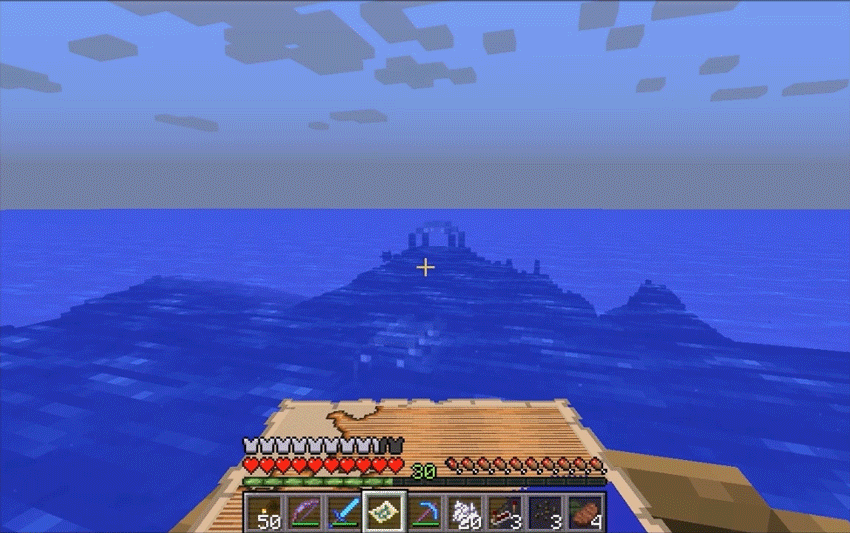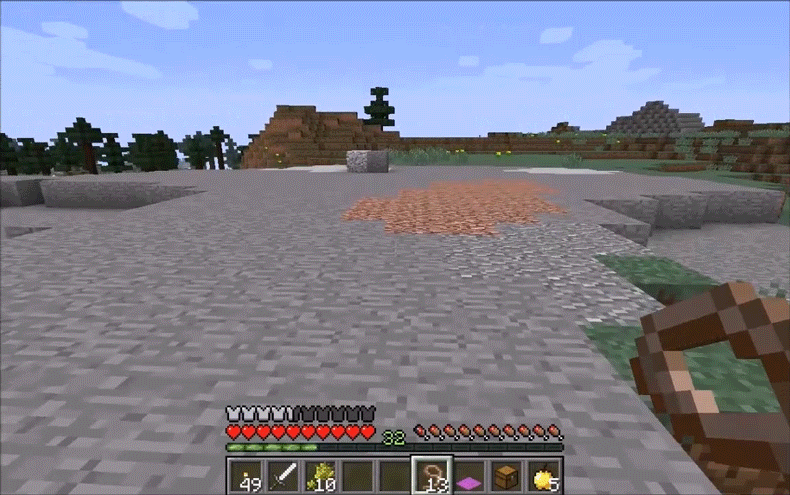
They’re far bigger than you’ve seen in erictures.
Minecraft‘s mysterious woodland mansions are sprawling timber and cobblestone compounds visible from hundreds of blocks away. They erupt from banks of fairy tale oaks punctuated by giant speckled mushrooms, orthogonal aberrations beckoning like inscrutable mausoleums. Inside lies treasure guarded by grumbling gray beings that can summon winged imps, crowds of snapping teeth, or chase you with hatchets down long carpeted halls. There’s even a variant of the latter nicknamed “Johnny.”
They’re part of the Exploration update, another complimentary iteration of studio Mojang’s blocky, do-it-yourself sandbox. It’s available now for the Java edition, and includes other curious novelties, like llamas (they’ll schlep your stuff around and spit on command), shulker boxes (they retain what’s inside even when broken) and village cartographers who’ll sell you exploration maps, so you can find your way to the new mansions, as well as the older ocean monuments.
TIME spoke with Minecraft creative lead Jens Bergensten about what inspired the Exploration update, getting to platform version parity, settling on a programming language, and why sequels are probably a bad idea.
Here’s what he told us.
TIME: What inspired the Illagers [hostile Villagers] that reside in the new Woodland Mansions?
Jens Bergensten: The design process for Minecraft is sometimes very random. Some days we just sit and play around, or we chat about the ideas that we have. And then we experiment with these ideas, and sometimes they explode.
So what happened was that I was building a house we use in the dark woods, and I was testing out different kinds. And then I figured that maybe I could generate a house using the structure block, which is essentially the block that copies a part of the world. After I’d spent some time on it, I decided I really liked it, and that I was going to put it in the game. That was essentially the thought process.
At the same time, I also knew that if I was going to add this feature, which would essentially become a dungeon type, I needed it to contain some kind of new mob. I was also discussing with a colleague that there aren’t really any mobs in Minecraft that can be expanded to have their own agenda or purpose. And as we were talking about that, I was inspired to do these kind of evil villagers that would have their own ideas and essentially be very hostile.
After that, everything got very interesting. So I started trying to create a gray-skinned Illager, and then tried to give it new behaviors and such. I already knew I wanted to create some kind of mob that would summon other mobs. And I also already knew that I wanted to create some kind of attack pattern. Those two features were then added to the Evoker [one of the two new Illager types, the other being the axe-wielding Vindicator].

The Illagers can summon flying minions called Vexes. Was that an attempt to encourage ranged engagement?
The idea wasn’t so much about making people use ranged weapons, it was more about getting players to move around. It’s about ensuring they don’t stay put. Normally, you’d just stand still and wait for the monsters to come within attacking range. I wanted to try something different.
It’s fun to find things, but it’s really boring to look for them.
It’s also tricky to make something feel difficult in Minecraft without just increasing the attack damage and health. I thought it would be more interesting to have a combat situation where you might be attacked from different angles all the time. That said, I know some people [playing the beta release] think the Woodland Mansion and Illagers are quite easy, but it’s very difficult for me to develop the game in a way that pleases everyone.
There’s something about sinister mansions in dark woodland biomes that feels tailor-made.
Speaking of the mansions, there was also a problem for me that when we added the Ocean Monuments, people knew they were in the ocean, but if you didn’t find one, it was kind of annoying trying to find them. That’s something I’ve mentioned to people before, that I feel it’s fun to find things, but it’s really boring to look for them.
Sometimes it’s best when you unexpectedly discover things in Minecraft. For instance, you don’t really go looking for a desert temple or a jungle temple. But it’s a nice surprise. That’s why I was quite happy that we managed to solve the technical challenge of making it possible to search in this infinite world, to put the Ocean Monuments and Woodland Mansions on this exploration map that you can trade from the Villagers. It ties together both with the villagers trading and the addition of the new dungeon.

Let’s talk about version uniformity, since the game is on so many different platforms at this point. Microsoft has said a major goal is version parity. But the console versions can’t do infinite worlds. And the original Java version keeps adding things the other versions have to wait for.
I think some of the older generation consoles, they will probably never catch up to all of the Java features. 4J Studios has done a really good job of keeping up with the updates. But ultimately, at some point in the future, we’ll need to draw a line in the sand and say “This is the game.” And then we’ll focus on the more modern consoles.
The current consoles, like the Xbox One and PlayStation 4, should be able to keep up with the new features. That said, I also feel that sometimes when we add new features to the Java edition, I wouldn’t say that we ignore the other editions, but we obviously do it for the Java edition first. And when we put it on the other platforms, we sometimes need to rethink and redesign how it works.
At some point in the future, we’ll need to draw a line in the sand and say “This is the game.”
Two quick examples of this. On Pocket Edition, when we added the Strongholds, at that time we didn’t have the Nether, so you couldn’t create the Eye of Ender, which is needed to find the Stronghold. So what we did then was to make sure that the Stronghold was always generated beneath a village. So if you saw a village, that was a hint that there may have been a Stronghold nearby.
And likewise, on consoles, which have limited worlds, 4J has made it so that you’re guaranteed to find the important pieces of the landscape you’d have in the Java edition, even though the latter version’s worlds are infinite.
Windows 10 and Pocket Edition are programmed in C++, and with The End and Elytra gliders and 256-block world height imminent, they’re nearing parity with the Java version. Will the Java and C++ versions continue in parallel, or will C++ eventually win out?
That’s a tricky question, because in a sense we feel the C++ edition is more future-proof since we control the technology from the ground up. The C++ version is also much easier to add new features to. So for instance, when we did the Gear VR version, or when we did the HoloLens project, it’s much more flexible from our point of view. It also allows us to have the mobile phone and computer cross-platform play, which we really want.
From that perspective, it looks like down the line that C++ will eventually be the main engine and also the main game version. At the same time, we have such a huge following on the Java edition. It’s also that most of the modders and YouTubers and essentially the opinion leaders are all on Java. We also know that even though the Pocket Edition has sold more copies, Java has a large essentially pirated active community which we want to reach. And of course the Java edition is much easier to mod.
Our ambition now is to work on both of these versions, and I almost see them as separate games. Obviously they’re the same game, but the community on Java edition is very strong, and the community on Pocket Edition is very strong. I think people understand that these are two different things, even where you have players like yourself who play both.

The C++ version just added support for tweaking the game by way of JSON text files. At this point, we can only fiddle with stuff that’s already in the game. Would we ever be able to do something like create new mobs from scratch, or is that a problem the JSON approach can’t solve?
That’s probably one of the problems that it can solve. Since the JSON files currently define the behaviors for mobs, it’s not such a stretch to imagine that you could add your own graphics for a mob and animations. I don’t want to promise anything right now, but I know that we want you to be able to mod as much as possible on the C++ version.
[At this point, Microsoft’s Aubrey Norris jumps in to mention that work continues on developing a scripting API to supplement the JSON files. Jens isn’t able to talk about that in detail yet, as it’s still “super early,” but Norris says it’s something the teams both in Stockholm as well as Redmond are pursuing.]
You’ve talked about there being a physics problem with doing larger creatures. Is that a fixable problem?
I would say that it’s definitely fixable. It’s a matter of putting someone on that task. It’s just the way the Minecraft physics engine works today that it’s tricky.
In the console versions, composer C418’s music plays constantly. In the Java and C++ version, the same tracks play infrequently. The mobile version doesn’t have music at all. Have you considered making any of that player configurable?
Yeah, I guess that would make sense. The way it plays in the Java edition is the way Notch [Markus Persson, the game’s creator] and the creative team envisioned it. I believe the reason it was changed for console was to ensure the game would never be completely silent. But you can’t quote me on that because I wasn’t involved when it was changed several years ago. And to be honest, when I play, I turn off the music because I want to listen to my own music when I play Minecraft.
I’m trying to tell people that I don’t want to turn Minecraft into an editor.
We recently hired someone in the Stockholm office to focus on the sound effects in Minecraft, because our process in the past was that we’d add a new feature, then we’d imagine what sound effects we wanted afterward. Now, with a person devoted to handling all the sound in the game, I told him, “You are the sound effects guy. Anything to say about sound, that’s essentially your orbit, your area of expertise.”
Even though obviously we discuss things when it comes to changes in the game, this same approach is how I feel about music. That if the composer believes the music is best played infrequently, then that’s the way it should be. People have different opinions about these things, so maybe an option to change the frequency would work. But in this case, I’m not a fan of options.

We’re used to seeing updates that significantly alter Survival mode, but what about Creative mode? Any plans to overhaul its toolset down the road?
Not really, though there are a couple of things I would like to improve in the user interface itself. The creative menus are starting to get really crowded, and there may be better ways for people to find the blocks they want to use. But for actual building in Creative mode, I’m not planning to change anything drastically right now.
One of the reasons for that is, I’m trying to tell people that I don’t want to turn Minecraft into an editor. I’m starting to see examples of people using Minecraft as a map editor for their games. And Minecraft is not very good at that, because it can only interact with one block at a time. For it to be a proper editor, we’d want you to be able to build things faster. Again, there are mods to do that. But for the core game, I feel it’s very important to keep it at one block interaction.
The main reason is that I want to encourage cooperation and playing together. If you build something with someone else, you can build it faster. And secondly, if you only can place one block at a time, it’s very easy for someone else to understand what you’re trying to achieve.
I feel that if we were to make a “Minecraft 2,” we’d be our own worst enemy.
When you think about the game years from now, let’s say years and years down the road, do you still see Minecraft and not “Minecraft 2?”
Yes, I believe so, but that’s also one of my challenges. If you compare the core vanilla game to what you can do with mods, it looks like we are really holding back. That’s actually the case. And the reason for that is when we add things to Minecraft, we’re trying to partly go slowly so that people can adjust to the changes, but we’re also trying to remember that we need to grow slowly in all directions. So some people like Creative mode, some people like exploring, some people like fighting, and some people like Redstone.
One example might be the mod Mo’ Creatures, which adds hundreds of different animals. We could do that ourselves and add lots of new animals. But we don’t want to emphasize Minecraft as one particular thing, we don’t want to say “This is what Minecraft’s about.” So we try to grow slowly in all directions.
Regarding starting over and making a sequel, I look at Minecraft as somewhat like an online roleplaying game, even though you play locally. By that, I mean people who are playing Everquest, who were very into Everquest, when Everquest 2 was released, most people didn’t make the leap. When they were asked to make the switch, they didn’t feel an obligation to, in part because they suddenly had dozens of different roleplaying games to choose from.
In a sense, I feel that if we were to make a “Minecraft 2,” we’d be our own worst enemy, and open up the field for any creative block building game to step in and take some of our players.

You’ve helmed and shaped what Minecraft has become for years now. Is there a point at which you see yourself moving on? To pass the torch as Notch did to you? Or would you like to hang around indefinitely?
[Laughs] I wouldn’t say indefinitely. I still think it’s very fun. I would say that sometimes I complain that I have the Minecraft curse, because I’d really love to work on different games. But it’s also a kind of self-imposed limitation, that I really like focusing on one thing at a time. And currently, that is Minecraft.
I still love the game and I still feel inspired by it. I wouldn’t say that I’m going to work on Minecraft for the rest of my life, but at the same time, I’d say I’m definitely not done with it.
More Must-Reads from TIME
- Donald Trump Is TIME's 2024 Person of the Year
- Why We Chose Trump as Person of the Year
- Is Intermittent Fasting Good or Bad for You?
- The 100 Must-Read Books of 2024
- The 20 Best Christmas TV Episodes
- Column: If Optimism Feels Ridiculous Now, Try Hope
- The Future of Climate Action Is Trade Policy
- Merle Bombardieri Is Helping People Make the Baby Decision
Write to Matt Peckham at matt.peckham@time.com